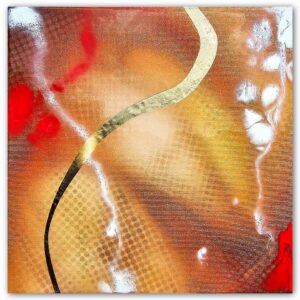- [email protected]
- +353 (0)86 224 0139
- Free Shipping Worldwide
The Quintessential Guide to Hanging Art
So you have started your art collection, but have you considered the best way to hang it? Don't worry with a few basic tools I will show you!
Introduction: The Importance of Decorating Your Home
Every home needs to be decorated according to the owner’s tastes. This is not something that can be achieved with a single thing, but has many aspects of life that need to be taken into consideration. Home decorating is never simple. It will require paying attention to many aspects of your life, but at the end of the day you are living in a space that reflects YOU.
There are many ways in which you can decorate your house – from painting the walls to buying furniture. Some people are content with making their house look nice by adding some finishing touches while others might go all out and get everything done at once.
How to Hang Your Art Collection
Faced with the challenging task of hanging art? You’re not alone! We all struggle with this task at some point. The only difference is that we think we struggle with it more than others. Hanging art can be very difficult and time-consuming. It becomes even more difficult when you have to deal with multiple pieces and can’t find a balance. Luckily, that’s why we’re here to give you expert advice in the ultimate guide to hanging art.
Hanging art can be a difficult and tedious process for those who don’t have any prior experience with the technique, it requires a little thought rather than just whacking a nail into a wall. The internet is full of plenty of websites that offer ideas and tips for finding the perfect frame, so it shouldn’t be difficult to find all the necessary equipment for your project.
It includes many images of hanging art, with tips for the novice.
Do you have a little one that has been begging to hang out with you while you work? Paint them a masterpiece and let them hang it on the wall. This is a great way to spend time with your kids and share a love of art.
Choosing the Correct Artwork for Your Space
Artwork can be a great addition to any space, but it can also be a headache. There are many different styles to choose from, and one size will never fit all. In order to find the perfect piece for your space, it is important to know the type of artwork you would like and the style you are going for.
A few things to consider when choosing artwork for your space:
- Style: Is the art abstract or classic? Modern or traditional?
- Size: Large pieces look good in open spaces and smaller pieces look good in small spaces.
- Colour: Different colours evoke different feelings and emotions; Consider the colours that you love and that fit with your home’s décor.
How to Hang a Picture
Paintings, posters, and other framed artwork are often the first decorative item people place in their new home. And with good reason! It can bring a bit of color to an otherwise blank space, make you feel more at home, or offer a new perspective on your surroundings. But for many of us it can also be an exercise in frustration as we try to figure out how to hang art on the wall!
I’ve compiled this guide with some tried-and-true tips that you can use to hang your next piece of art.
List of Recommended Tools
Anyone with a basic level of DIY skills and tools will probably already have these items, if not here is a list items that you help achieve a professional job:
- Pencil;
- A Self-Levelling Cross-Line Laser Level is a great tool to have, especially if you will be hanging a lot of artwork;
- Stud finder to help detect wood, metal, studs and live A/C wires;
- Drill with hammer action;
- Drill bits;
- Raw plugs and screws for heavier artworks;
- Wall protector pads.
How To Hang Art On Wall?
Hanging art can be a little intimidating and what the best way? There are a lot of different types of walls, all with their own specific hanging needs. I’m not a builder but, there are two types of interior walls you are going to come across the most often: drywall and plaster.
Drywall
Drywall / plasterboard sheets are typically screwed into wooden studs. This type of wall is commonly found in most modern homes. If you can, I recommend drilling into the studs, particularly if the artwork is quite a heavy piece.
Brick/Block
Usually found in older homes and rendered with a plaster finish. Brick or block walls are a lot more sturdy to drill into and hang artwork form. You will need a drill with a hammer action and use a suitable masonry drill bit.
Solutions for Renters
Before making any permanent changes to your property, regardless of how small, it is always wise to get permission from the landlord first. Losing any deposit money when you leave is the last thing you want!
There is a high chance your landlord won’t allow holes to be drilled in the wall. If this is the case, you have some alternative options.
Perhaps the most convenient and hassle-free way to display art is to lean it. Place it on a mantle piece, sideboard, dresser or bookshelf. If it’s a tall artwork, simply place it on the floor.
Historic homes are usually full of character and sometimes have built-in mouldings, which is a dream for hanging and displaying art on, with S-shaped hooks and decorative craft wire.
Mouldings are a great way to add detail to your home’s interior design. If your home doesn’t have built-in moulding, you can still pick up a picture rail or similar hanging system. This is a great solution for renters, obviously just make sure your landlord allows the installation of picture rails.
Pegboard
Pegboards are a very effective way to display artwork. The artwork can be easily displayed by simply placing two hooks in the same row of pegboard holes, or by using a string on the back of the canvas. Either method will produce a stable easel display.
Picture Display Stands
An artist’s easel or a display easel can be a great way to display a painting and adds a classy touch to your home. If you have the space they are best put in the corner of a room.
Picture Hanging Strips
If you’re renting and cannot use nails, picture hanging strips may be an option to consider.
The removable picture hanging strips eliminate the need for nails, screws, or other tools to hang picture frames, canvases, and artwork.
Remember to get the right weight range for each artwork, and to apply extra strips for increased interlocking strength.
The strips are suitable for most smooth surfaces, such as painted walls, tiles, metals, and wood. The best results are achieved by using isopropyl rubbing alcohol to prepare the wall, and following the instructions carefully.
As long as you stay within the range of recommended weight, it will be easy to remove, straighten, and reposition frames.
If they need to be removed, never pull them away from the wall or towards you. Always pull them downwards so you don’t cause damage to the walls. The strips are designed to be removed cleanly without leaving holes, marks, or sticky residue behind.
Velcro
Velcro that is heavy duty and extra strong is the best for hanging art securely. You follow the same steps for hanging with hanging strips as with Velcro.
Take Care When Hanging Art
When hanging art, be sure to measure twice and drill once. Most importantly, always hang vertically, this will avoid any crooked artwork on the wall. Take care when hanging art, be sure to check that there are no electrical wires or pipes in or behind any walls you drill into. Most stud finders will help you discover any hidden wires.
Never Use Adhesive to Hang Artwork
When hanging art on the wall, never use adhesive to hang artwork. This is a simple mistake that can ruin both your painting and wall. Take the time to use the correct wire or clips to properly hang the painting.
Protecting the Artwork
If you are thinking about hanging art in your home, it is important to think about the space and position of the art. Is there a particular area that you want to draw attention to, or are there other placement purposes you have in mind for your display? Once you have answered these questions, you can start to figure out how to hang the art.
Where to put Cherished, Light-Sensitive Art
Some art is considered to be light-sensitive, meaning it requires low lighting to preserve the colours. This type of artwork should avoid locations with direct sun light. The most common kind of art that is light-sensitive is oil paint on canvas.
There are different ways to make sure your art is well taken care of. One way is to frame wisely and use conservation museum quality clear glass or acrylic, which offers the ultimate UV protection which will stop light from harming the paintings.
Hang Art with Cohesive Spacing
Hanging art is difficult and confusing for many people. It seems like a complicated process, but it doesn’t have to be. To successfully hang a piece of art, it’s important to be organized and know the size of the frame. Decide on the placement of the artwork before choosing a spot for the frame. Once the spot is chosen, plan how you will be arranging art
You may wish to consider symmetrical arrangements to help complement your interior design, and display artwork flawlessly for any occasion or style of room.
Planning the Layout of the Wall Decor
The placement of artwork in a room is important. It sets the tone and mood for the entire space. It can be a focal point for the room, or it can help bring the whole space together.
Layout options for wall art are vast and there is no one way that will work best in every situation. So, it’s important to consider what you want your artwork to do in your space before deciding the final layout.
So as to avoid any creative block, I recommend planning your gallery on the floor first. Start with your main image and build it up from there. Then using low tack masking tape, mark out the area where the picture needs to be hung on the wall. In order to achieve balance, you should leave the same amount of space on either side of the wall. Stand back and see how it looks, if needs be maybe leave it for a day or two if you are unsure.
Creating Visual Interest with Odd Numbers
Always try to display artworks in odd numbers, and the number three [3], specifically have long been heralded by designers and stylists as magical numbers that should be applied to interiors.
An even number creates symmetry, but an odd number creates interest. The art of grouping objects in odd numbers is more effective at attracting your attention. As a result, odd numbers make your eyes move around the grouping and your room as well.
Visual interest comes from this forced movement. This is why the concept of a set of three is more appealing and memorable than simply two. For example, a three piece suit or a sofa and two chairs are a classic combination for a reason.
In order to figure out if a gallery wall at home is working, count the artworks. Adding or removing artwork can make your new arrangement pop off the wall, if you have an even number. This is a no-fail formula to create very effective groupings and a flawless wall display.
The relationship between the paintings is as important as the images themselves, and often the interaction between them informs the viewer how to interpret each painting individually. The combination of different artworks can create extraordinary results and can be a very impressive focal point in your home.
3 Steps to Hang Art at Eye Level
Generally, art should be hung so that its midpoint is eye level, which is approximately 145 cm to 152 cm (57 to 60 inches) from the floor. If most of your household members are on the short side of average human height, hang your art at the lower end of the range, or consider a viewing step for them to stand on.
In rooms with ceilings above 2.5 metres (8 ft), hanging your art at 152 cm (60 inches) will help with proportions. Different sized rooms will of course affect the height at which you should hang art. If this is too high for your décor, try the rule of thirds (an abstract concept meaning you divide the wall space into thirds both horizontally and vertically) instead.
This more often than not achieves a more dynamic composition. However, as a rule of thumb, the smallest dimension of your art should be no smaller than 30% of the largest dimension.
Step 1
To find the center of a work, measure its height and divide by two. Then subtract the mounting wire position from this measurement. It’s important to be mindful of image orientation when determining the height of mountings.


Step 2
First measure 145 cm (57 inches) from the floor and marking it on the wall. However, the eye level rule doesn’t always apply to art displayed above furniture, mantles, and other obstructions.
Depending on your situation, you should position the frame or edge of the piece 15 to 20 cm (6 to 8 inches) above the feature.
Step 3
When hanging multiple works of art, hang them as if they were one. Choose a placement that will give the feeling of one work. The paintings should be near enough to each other to feel as one, but far enough apart so that they are visually distinct.

The viewer should not have to take time to see how each painting is different from the next. It will be easier for the collection to appear balanced if different works are grouped around the 145 cm (57 inches) focal point. Ideally, multiple artworks should be spaced by 7 cm to 15 cm (3 to 6 inches).
Often, smaller paintings work well near light switches, or hung low over small pieces of furniture, such as bedside tables.
Different Types of Hooks and Wires for Hanging Artwork
When looking for the best solution to hang artwork, there are many different items that can be used. These items vary from painting hooks, which are made specifically for hanging paintings, to traditional picture hooks and nails.
Generally, the painting hooks are the best option as they are designed to better accommodate paintings and not damage them. But if your art is smaller and you would prefer a nail or hook, there are many different sizes and colours to choose from.
I always use brass picture wire on all my pictures and all my paintings come with this ready attached.
I always like to see what museums use and like to see any new ideas that shop fitters are implementing.
Nails
Do you know which nail to use on the wall? It’s just a nail, right? If you want extra security, use a headed nail. A nail head will act as a stopper that prevents the frame from falling. The nail in the wall should be tight, and the frame should be positioned securely on the sawtooth or J-Hook.
Sawtooth Bracket
Sawtooth art or picture hangers are small metal objects with a flat edge on one side and a jagged edge on the other. Essentially, they resemble saws. The most appropriate use for them is for wood-framed pictures and art that weigh less than 11kg (25 lbs).
Many different sizes and shapes are available for sawtooth picture hangers. Some versions have prongs that are hammered directly onto the frame, while others require screws or nails to be attached to the upper rail.
Screw Eyes
A screw eye is a screw that has an eye on one side and threading on the other, which is used to attach cables to objects. From hanging objects directly on nails or J-Hooks with brass picture wire to provide more security.
D-Rings
For hanging pictures, professional picture framers usually use D rings, which can be found at most good hardware stores.
The rings are essentially a D-shaped ring mounted on a plate. They are always used in pairs and are screwed into the frame from behind.
They can have one or two screw holes. One screw hole is ideal for small, lightweight works. To ensure that a heavy painting is securely hung, use two screw hole D rings.
J-Hooks
To hang artwork with D-Rings or brass picture wire, J-hooks can be attached to the wall. Alternatively, you can reverse the hooks and attach them to picture frames, hanging the picture from rings or rails attached to the wall.
Just remember that you may need to use alternative fixings when screwing into plasterboard or hardwall.
A professional hanger will tell you that a D-ring and a J-hook are the best hanging methods available. Additionally, museums secure their frames by using mending plates, which prevent priceless artworks from moving and falling off the wall during an earthquake.
Clip-Rail/ Cable Gallery Picture Hanging System
There are a number of manufacturers that produce modern picture-hanging systems, which allow you to hang pictures with wire and picture-rail hooks. Hang your artwork, paintings, picture frames and other wall decorations.
These picture hanging systems are either wall- or ceiling-mounted and are easy to cut and mount. They look very professional.
How to Hang a Large Heavy Picture: French Cleat
A French cleat is a system traditionally used to hang cabinets and consists of a flat piece of wood or metal cut at a thirty- to forty-five-degree angle mounted to a wall. The matching piece is mounted to the back of the cabinet.
The two pieces interlock and the weight of the piece pulls the cleat halves together. The cleats are open on the ends, allowing for minor corrections to be made left to right. However, the piece always stays level.
How to Show Off More-Casual Art
It’s no secret that people like to show off their art – especially when it’s in the form of a post on social media. But showing off your work doesn’t have to be such a formal process, and there are ways to embrace the more casual, personal nature of visual art in the digital age.
For example, you could share images of your projects with friends and family, or take snapshots of your work in progress and post them to Instagram.
How to Display NFT Art?
Non-Fungible Tokens, or NFTs, are unique digital assets that are impossible to replicate. Imagine them as pieces of art that one can’t copy. The advent of NFTs has created a whole new era for art lovers, and the possibility of obtaining the next “Mona Lisa” is now a reality.
Cryptokitties was one of the earliest attempts to use blockchain technology for recreation and leisure. It’s a collection of digital cats with different traits, which can be bred to make new ones. They’re addictive and have been traded for large sums, for example, on May 12, 2018, a CryptoKitty was sold for $140k.
It typically takes more work to display NFTs around your home or in a gallery than it does to hang a physical artwork, but the results are often stunning. Many NFT pioneers have developed innovative ways of displaying their collections using both analog and digital tools.
Digital Frames
In the past decade, digital photo and video frames have advanced considerably, and many crypto art collectors have used these devices to bring NFTs to life on their walls. They are available in all sizes and shapes, and their prices range widely.
A non-fungible token represents unique digital assets which can neither be duplicated nor destroyed. In other words, you can attach any type of digital content to your token.
Using NFTs, one can make a frame to display art, and using NFTs to display the art in the frame. Consequently, when people look at the frame from certain angles, they’ll be able to see how the art changes!

Conclusion
I hope you enjoyed this article about how to hang your art collection and avoid making some of the most common mistakes. I know that hanging art can be a difficult task for some, which is why I created this blog post.
If you are interested in learning more about starting your own art collection, then I suggest you read this post.
By following the advice provided to you with in this blog, you should be able to hang art without too much hassle. You will find that if you are patient, you will be able to hang art and your efforts will be worth it!
If you enjoyed this article, please subscribe to my mailing list and share it with your friends, family, and business associates if you think they would be interested. As an independent artist, this kind of support is invaluable.
The time you spent reading this blog is greatly appreciated, thank you.
Looking For Art?
Adrian Reynolds, ‘Ren’, is a contemporary artist based in Dublin, Ireland. His paintings are a response to the world around us. A world that changes faster than ever before. His work explores colour, form, and texture, placing it at the intersection of abstraction and representation. His work has been featured in Ireland, the UK, and the US.
Latest Artwork
-
Bullets Travel Distance & Time
Abstract Art Paintings €1,000.00Add to basketBullets Travel Distance & Time | Acrylic Painting By Adrian Reynolds
-
The Perception of Narrative
Abstract Art Paintings €800.00Add to basketThe Perception of Narrative | Fine Art Acrylic Painting By Adrian Reynolds
-
Iridescent Dream
Abstract Art Paintings €240.00Add to basketIridescent Dream | Acrylic Painting By Adrian Reynolds
-
Blue Nebula
Abstract Art Paintings €240.00Add to basketBlue Nebula | Acrylic Painting By Adrian Reynolds



